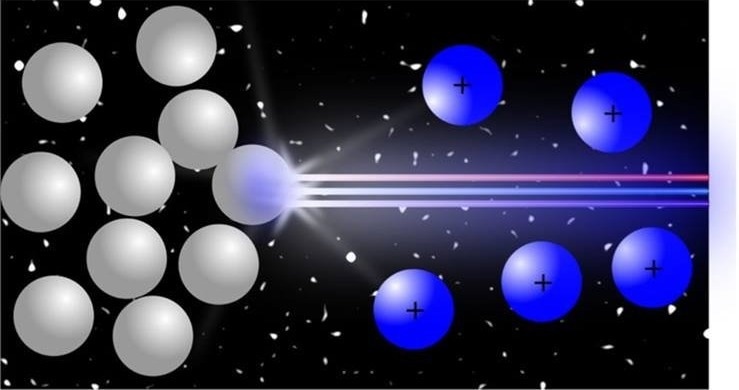The environment and human health are adversely affected by plutonium, even in minute quantities. The isotope plutonium-244 provides clues about nucleosynthesis and neutron star mergers, so plutonium also aids in comprehending the universe.
 Resonance ionization mass spectrometry is a highly selective and sensitive technique for analyzing extremely small amounts of elements. It uses tunable lasers to ionize atoms of the desired elements. Image Credit: Elisa Romero-Romero
Resonance ionization mass spectrometry is a highly selective and sensitive technique for analyzing extremely small amounts of elements. It uses tunable lasers to ionize atoms of the desired elements. Image Credit: Elisa Romero-Romero
Therefore, methods for detecting “ultra-trace” plutonium are required by researchers. The term “ultra-trace” describes extremely small quantities of a material, similar to the mass of a DNA nucleotide in a single human cell.
Currently, scientists are examining the photoionization fingerprints of plutonium using special lasers. This is the process of absorbing enough light energy for an electron to depart and form a positive ion. The method achieved record levels of efficiency in identifying ultra-trace amounts of plutonium atoms.
The Impact
Finding plutonium is crucial for several scientific fields of study. It is included in courses on astrophysics, environmental science, reactor safety, and nuclear forensics and safeguards. Scientists examine the ratios of the different isotopes of plutonium and their quantity in samples, among other things.
The element is often present in these samples in extremely minute concentrations. Nuclear scientists have increased the laser ionization of plutonium efficiency tenfold using this new method. More of this element is now available for study using the resonance ionization mass spectrometry technique.
Summary
With titanium-sapphire lasers, researchers examined the three-step resonance photoionization spectra of plutonium. The objective was to create more effective laser ionization techniques for resonance ionization mass spectrometry’s ultra-trace analysis of plutonium isotopes. Numerous applications can benefit from this technology.
The study of plutonium-244, for instance, in deep-sea crusts and sediments provides information on the nucleosynthesis of chemical elements during neutron star mergers. It is the longest-living plutonium isotope, with a half-life of around 80 million years.
Characterizing plutonium isotopes and their abundances requires particularly sensitive analytical methods for these applications.
In this study, researchers from Oak Ridge National Laboratory and the University of Tennessee, Knoxville employed three pulsed titanium-doped sapphire laser beams to evaluate spectra formed from plutonium’s photoionization.
To obtain extraordinarily high element selectivity, the method employs stepwise resonant stimulation of the atoms with three photons. Mass-selective detection is used to find the generated ions.
Excellent isotope selectivity and background suppression from undesirable species result from this. Six of the thirteen novel second-step energy levels that the researchers discovered were used to examine a wide range of third-step states.
These efforts resulted in the discovery of an extremely effective three-step method, which improved plutonium’s total ionization efficiency from its previously reported level of 10% to more than 50%.
This information is based on a study funded by the Department of Energy Office of Science, Office of Nuclear Physics.
Journal Reference:
Alfredo, G.-U., et al. (2023) High efficiency laser resonance ionization of plutonium. Scientific Reports. doi:10.1038/s41598-021-01886-z.